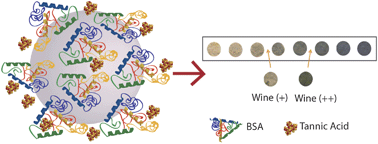
Assay to measure wine "Astringency"
“Astringency”, a sensation of dryness that certain food and beverages give the mouth, may be a term reserved to food critics. However, understanding the chemical basis of the sensation, namely the interaction of salivary proteins and dietary polyphenols, broadens the appreciation of the term to include the scientific community, as well.
Goreti Sales and colleagues from the Polytechnic Institute of Porto, Portugal, have developed an assay to measure the level of protein-polyphenol interaction, and hence quantify “astringency”. In brief, model salivary protein was immobilized on a solid support and dipped into polyphenol solution. Protein binding to polyphenol was indicated by a simple colorimetric redox reaction that is detectable by the naked eye.
Learn more about this latest discovery by accessing the link below. This paper will be free to read until May 28th .
Protein–polyphenol interaction on silica beads for astringency tests based on eye, photography or reflectance detection modes
J. Rafaela L. Guerreiro, Duncan S. Sutherland, Victor De Freitas and M. Goreti F. Sales
Anal. Methods, 2013, Advance Article
DOI: 10.1039/C3AY26478E










